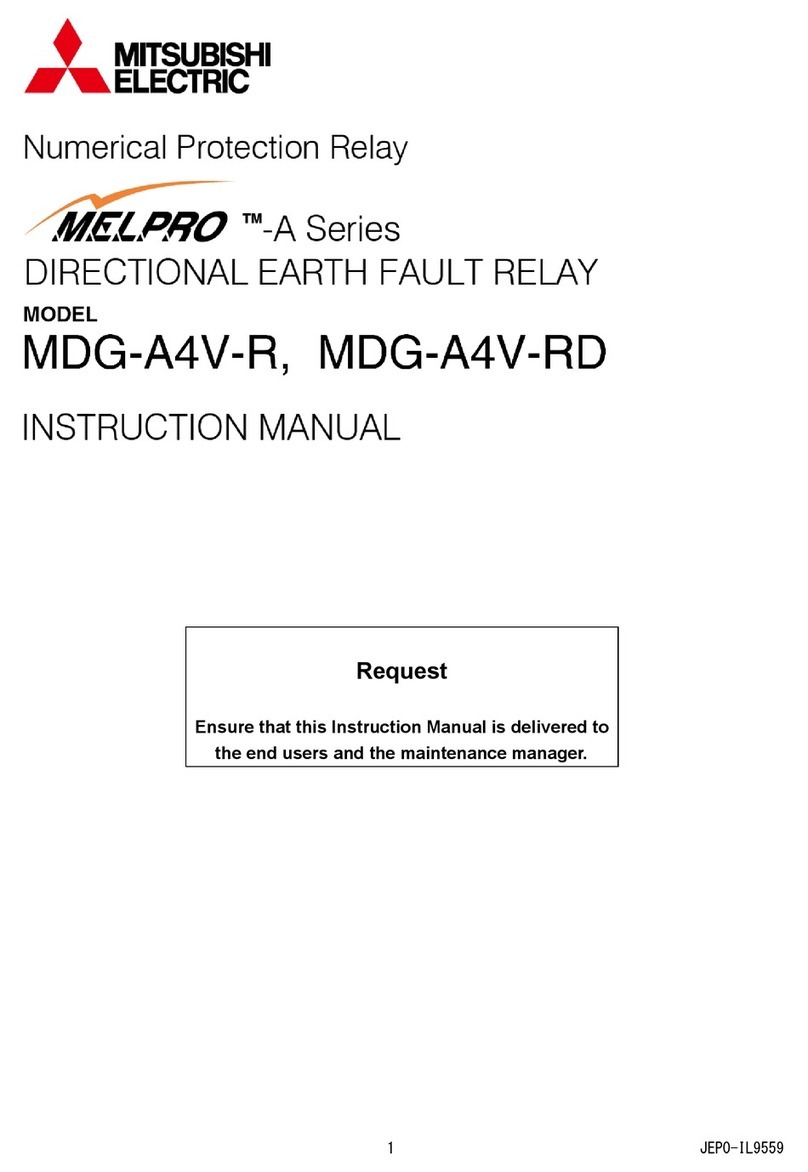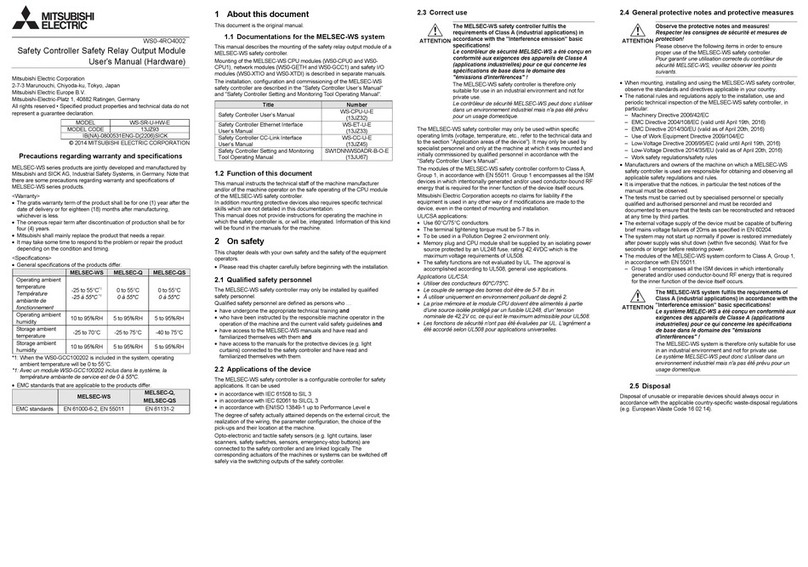PCKN-OIL738
6
2 Rating and specifications
2.1 General information
Type name CBV2-A01D1
Relay without RS232C I/F 354PMB 355PMB
Style Relay with RS232C I/F 541PMB 542PMB
Undervoltage element ×31
Protection Overvoltage element × 3
Element
Measurement Voltage
Frequency 50 Hz 60 Hz
Voltage 57 ~ 120 V
Voltage Common use for 100 ~ 220VDC / 100 ~ 220VAC
Rating Auxiliary
power supply
*21 Operative range DC : 85 ~ 242 V (Range of 80 ~ 286VDC is allowable temporarily.)
AC : 85 ~ 242 V (Range of 80 ~ 253VAC is allowable temporarily.)
RUN Indicate the result of self-diagnosis. The lamp is lit for normal conditions
and off for abnormal.
Unit Indicate the unit symbol for measurements.
Item No., Item data Display measurement, status, setting and option data selected with an item
number.
Display
Communication
With a communication card installed: the lamp is lit for normal conditions,
blinking during communication and off for abnormal.
With a communication card not installed: the lamp is off.
Self-diagnosis Monitor the electronic circuit and internal power supply to output signal to
the RUN LED and self-diagnosis output (ALARM).
For trip 2 make contacts: X4 and X5(programmable output)
For signaling 4 make contacts: X0to X3(programmable output)
Configurations For self-diagnosis
output 1 break contact: Y (open for normal result of self-diagnosis with power on)
Make 110VDC, 15A, 0.5 s (L/R = 0 s)
220VDC, 10A, 0.5 s (L/R = 0 s)
Break 110VDC, 0.3A (L/R<40 ms)
220VDC, 0.15A (L/R<40 ms)
For trip
Carry 1.5 A, continuously
Make and Break 500 VA (cosφ= 0.4),
60W (L/R = 0.007 s)
Max. current 5 A
Output
contacts
Capacity
For signaling and
self-diagnosis
output Max. voltage 380VAC, 125VDC
Voltage circuit 1 VA or less (with rated current)
Zero-phase voltage circuit 0.15 VA or less (with rated current)
Burden
Auxiliary power supply circuit
For 100VDC: approx. 5 W (approx. 7W including communication card)
For 100VAC: approx. 7 VA (approx. 9VA including communication card)
For 220VDC: approx. 6 W (approx. 8W including communication card)
For 220VAC: approx. 12 VA(approx. 14VA including communication card)
Mass Net weight of relay unit : approx. 2.3 kg
Including case : approx. 3.0 kg
Case/cover Size : D1 type
Color : N1.5
*21 When an uninterruptible AC power source is not provided in your system for the auxiliary supply voltage, use the
type CPS1 AC/DC converter or commercially available uninterruptible power supply (UPS).
Power supply product of 24VDC or 48VDC is also available if ordered (non-standard product).
In addition, the power supply duration of the type CPS1 AC/DC converter is confirmed about 2 seconds in
combination with one MELPRO-D series relay. Therefore, in the case that the required power supply duration after
power source loss exceeds 2 seconds, please use a suitable commercial uninterruptible power supply.
When the power supply back up for the control power supply of a circuit breaker is required, it is necessary to
prepare the backup power supply different from the type CPS1 AC/DC converter.




































